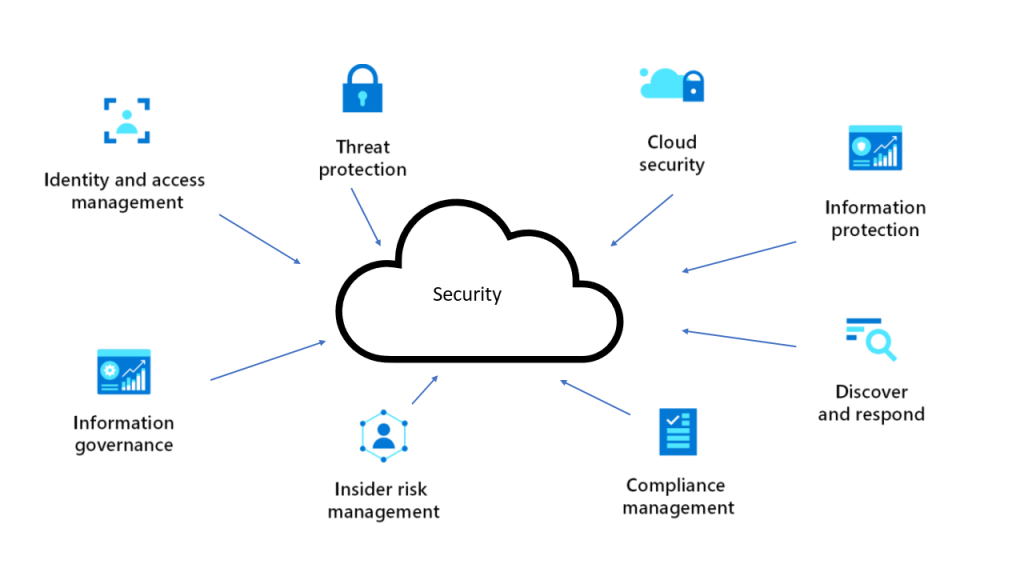In today’s world, cloud computing has revolutionized how businesses operate, offering unparalleled flexibility, scalability, and cost-efficiency. However, with these benefits come significant security challenges. A well-designed cloud security architecture is essential to protect sensitive data, ensure compliance, and maintain trust. This article will explore what cloud security architecture entails and outline best practices to help organizations secure their cloud environments effectively.
Understanding Cloud Security Architecture
Cloud security architecture is a framework of tools, technologies, policies, and procedures designed to protect data, applications, and infrastructure within cloud environments. It encompasses various security measures tailored to cloud-specific threats and vulnerabilities. A robust cloud security architecture addresses several critical components:
- Data Protection: Ensuring that data is secure both at rest and in transit.
- Identity and Access Management (IAM): Controlling who has access to what resources.
- Network Security: Protecting the integrity and confidentiality of data as it travels across networks.
- Application Security: Ensuring that applications deployed in the cloud are secure.
- Compliance and Monitoring: Continuously monitoring the environment for compliance and security issues.
Best Practices for Cloud Security
Capsicum Corporation will help you make the best security decisions for your cloud environment
1. Understand the Shared Responsibility Model
In cloud computing, security responsibilities are shared between the cloud service provider (CSP) and the customer. Understanding this model is crucial. Generally, CSPs are responsible for the security of the cloud (infrastructure, hardware, software, and networking), while customers are responsible for the security in the cloud (data, applications, operating systems, and configurations). Knowing who is responsible for what helps prevent security gaps.
2. Data Encryption
Encryption is a fundamental practice for protecting data. Always encrypt sensitive data, both at rest and in transit. Most CSPs offer encryption services that are easy to implement. Ensure that encryption keys are managed securely, preferably using a dedicated key management service.
3. Implement Strong Identity and Access Management (IAM)
IAM is critical in controlling access to cloud resources. Use strong, unique passwords and enable multi-factor authentication (MFA) for all accounts. Employ the principle of least privilege, ensuring users and applications have only the access necessary to perform their functions. Regularly review and update access policies and roles.
4. Secure Network Traffic
Network security is paramount in cloud environments. Use Virtual Private Clouds (VPCs) to isolate different parts of your infrastructure. Implement security groups and network ACLs (Access Control Lists) to control traffic to and from your instances. Use VPNs (Virtual Private Networks) and SSL/TLS (Secure Sockets Layer/Transport Layer Security) to encrypt data in transit.
5. Regularly Update and Patch Systems
Keeping your systems updated is one of the simplest yet most effective security practices. Regularly apply patches and updates to your operating systems, applications, and other software components. This helps to protect against known vulnerabilities and exploits.
6. Monitor and Log Activity
Continuous monitoring and logging are essential for detecting and responding to security incidents. Use cloud-native monitoring tools provided by your CSP, such as AWS CloudTrail or Azure Monitor, to track activities and access patterns. Set up alerts for unusual activities and review logs regularly.
7. Use Automation to Enhance Security
Automation can significantly enhance your security posture. Use automated tools to deploy infrastructure as code (IaC), ensuring consistent and repeatable configurations. Automate security assessments, vulnerability scans, and compliance checks to identify and address issues promptly.
8. Implement a Robust Incident Response Plan
Despite all precautions, security incidents can still occur. Having a well-defined incident response plan is crucial. Ensure your team knows how to respond to various security incidents, from data breaches to denial-of-service attacks. Regularly test and update your incident response plan to keep it effective.
9. Regular Security Training and Awareness
Human error is a significant factor in many security breaches. Regularly train employees on cloud security best practices, phishing prevention, and how to recognize potential security threats. A well-informed team is your first line of defense against cyberattacks.
10. Leverage CSP Security Features and Tools
Cloud service providers offer a plethora of security features and tools designed to help you secure your environment. Familiarize yourself with these offerings and leverage them to enhance your security posture. For example, AWS offers services like GuardDuty for threat detection and Shield for DDoS protection, while Azure provides Security Center for unified security management.
11. Perform Regular Security Audits and Assessments
Regularly auditing and assessing your security posture helps to identify potential vulnerabilities and ensure compliance with relevant regulations. Conduct internal audits and consider third-party assessments to gain an objective view of your security practices.
12. Ensure Compliance with Regulations
Compliance with regulations such as GDPR, HIPAA, and CCPA is not just a legal requirement but also a critical aspect of your security strategy. Use cloud compliance tools and services to automate compliance checks and ensure that your cloud environment meets all necessary legal and regulatory requirements.
Securing a cloud environment requires a comprehensive approach that addresses data protection, access management, network security, and more. By understanding the shared responsibility model and implementing best practices such as encryption, IAM, continuous monitoring, and regular training, organizations can significantly enhance their cloud security posture. Leveraging the tools and features provided by cloud service providers can further streamline and strengthen your security efforts. In the evolving landscape of cloud computing, staying vigilant and proactive is key to protecting your valuable assets and maintaining trust with your users.

